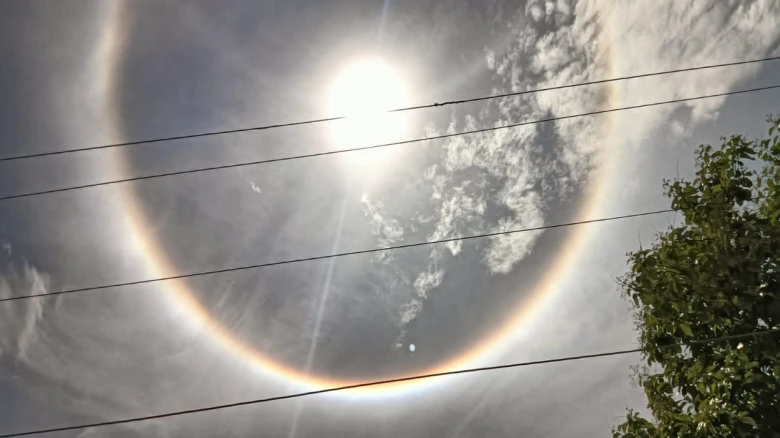A sun halo is an optical phenomenon that arises when sunlight interacts with ice crystals in the atmosphere. It manifests as a luminous ring or halo encircling the Sun, typically with a radius of about 22 degrees.
Digital Desk: In several parts of Assam, residents witnessed an unusual astronomical occurrence as a mysterious ring encircled the Sun in the sky. This multi-colored ring, resembling a rainbow encircling our solar system's star, is known as a sun halo.
The enigmatic ring was visible for several hours across various parts of the state, captivating onlookers who documented the event. This rare phenomenon is the result of the intricate interplay of light and optics with icy particles in the clouds, a process referred to as light dispersion. The sun halo is also recognized as the 22-degree-ring halo.
WHAT IS A SUN HALO?
A sun halo is an optical phenomenon that arises when sunlight interacts with ice crystals in the atmosphere. It manifests as a luminous ring or halo encircling the Sun, typically with a radius of about 22 degrees. This ring is formed by unique hexagonal ice crystals present in cirrus clouds, which are thin and wispy.
When sunlight enters these ice crystals, it undergoes refraction—bending as it passes through the crystal's surfaces. This refraction separates the sunlight into its constituent colors, producing a spectrum visible as the halo.
Light undergoes two refractions within the ice crystals, with the bending influenced by the crystal's dimensions. In a 22-degree halo, observed in places like Prayagraj, light enters through one side of the ice crystal and exits through another, refracting upon both entry and exit.
The formation of sun halos hinges on the size and alignment of the ice crystals, as well as the angle of the sunlight. The crystals must be oriented in a specific manner, with their flat surfaces parallel to the ground, to create the halo effect. This accounts for the relative rarity of sun halos.



Leave A Comment